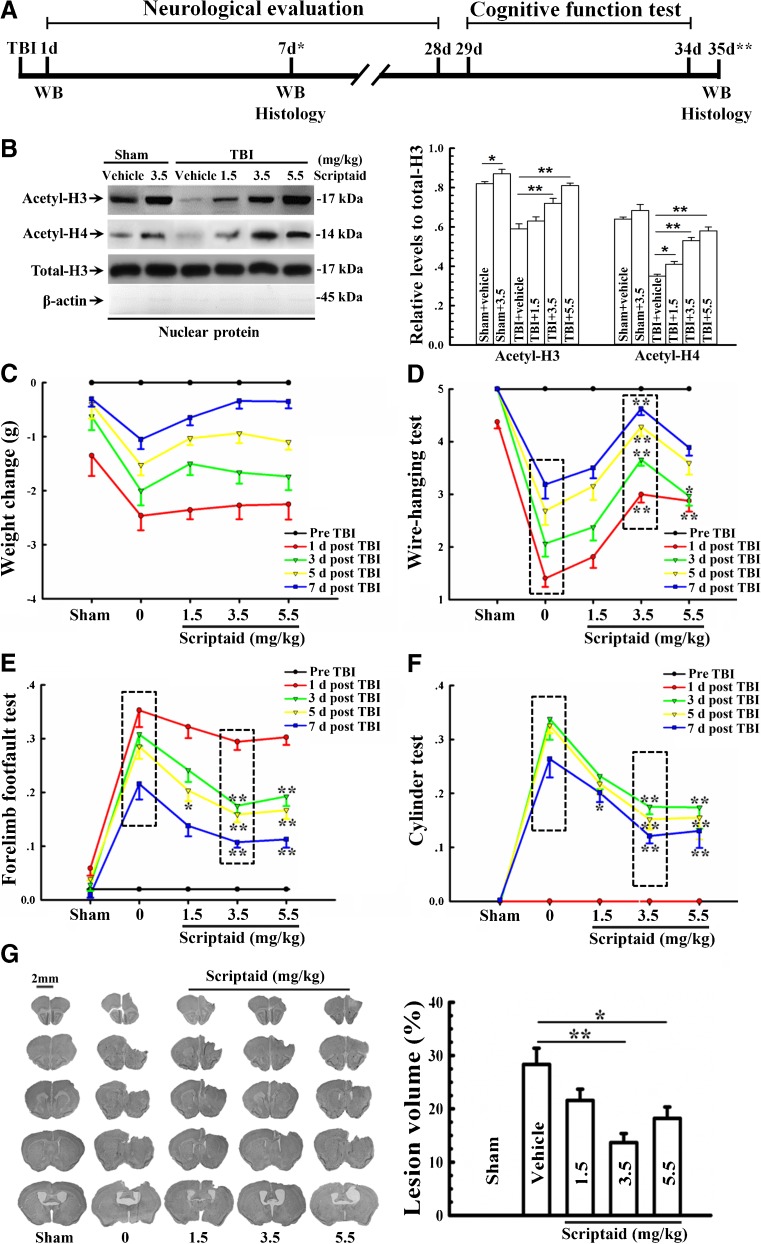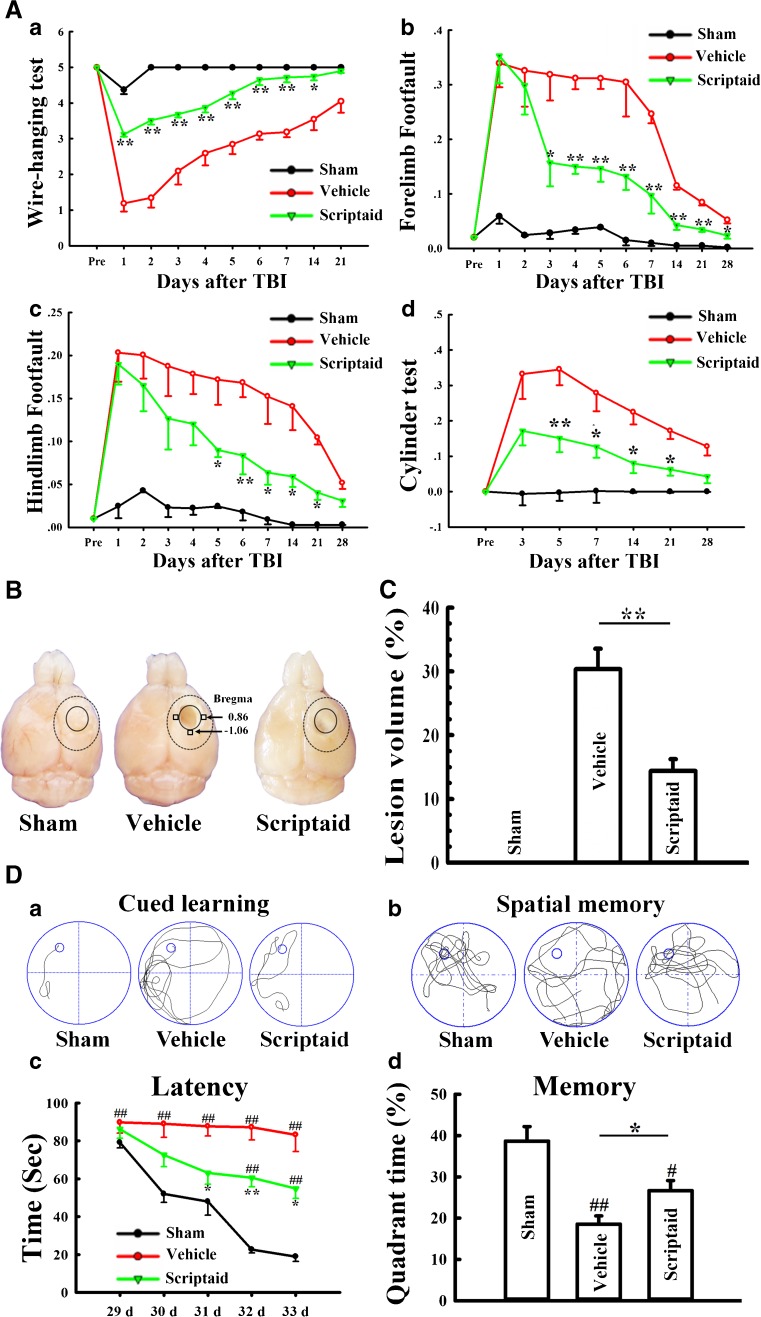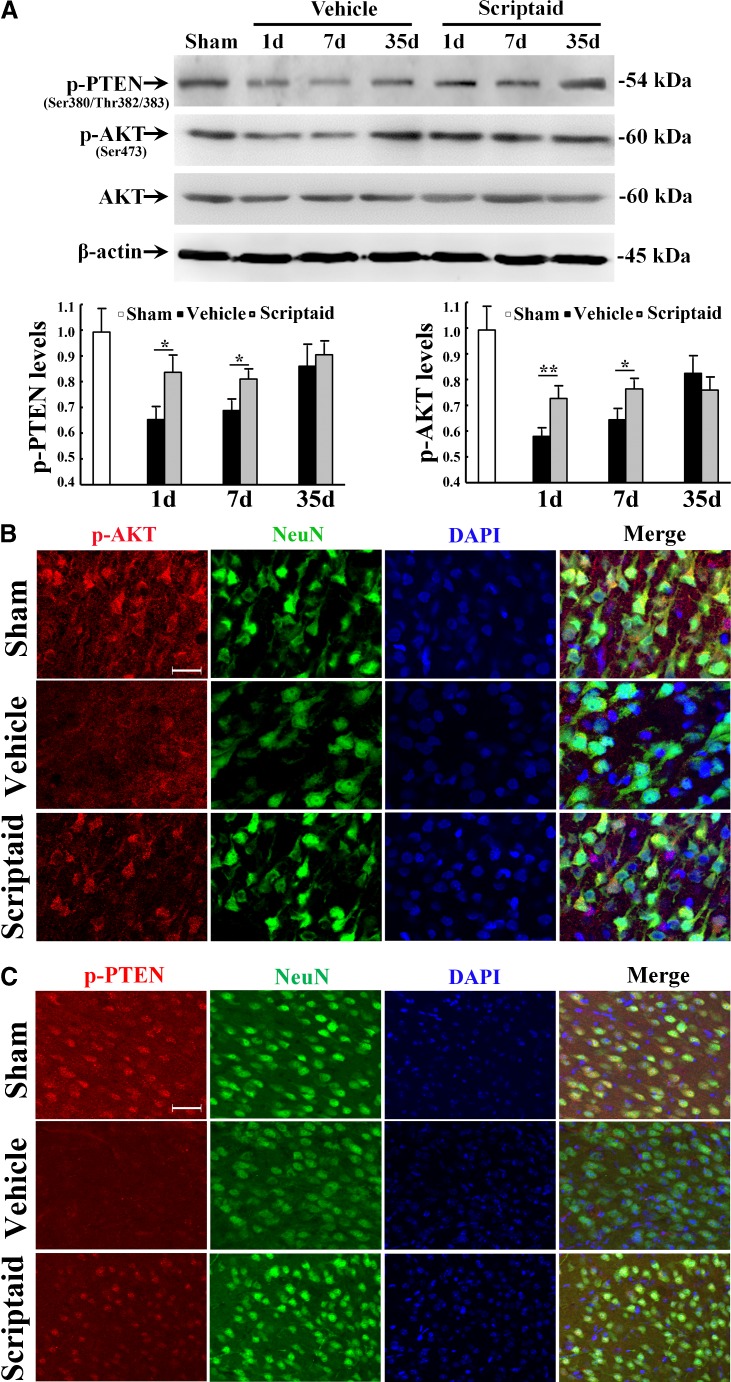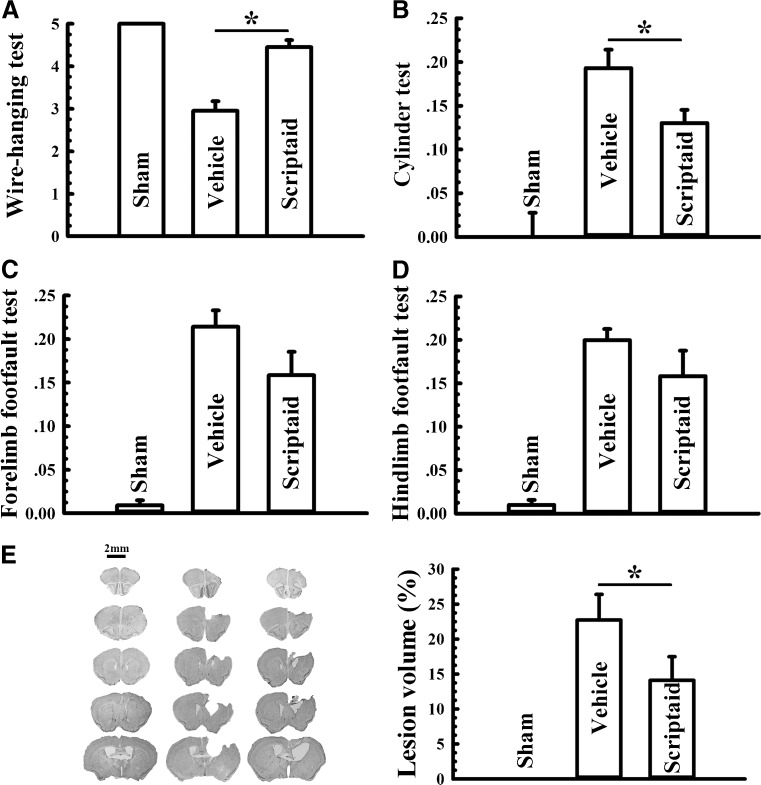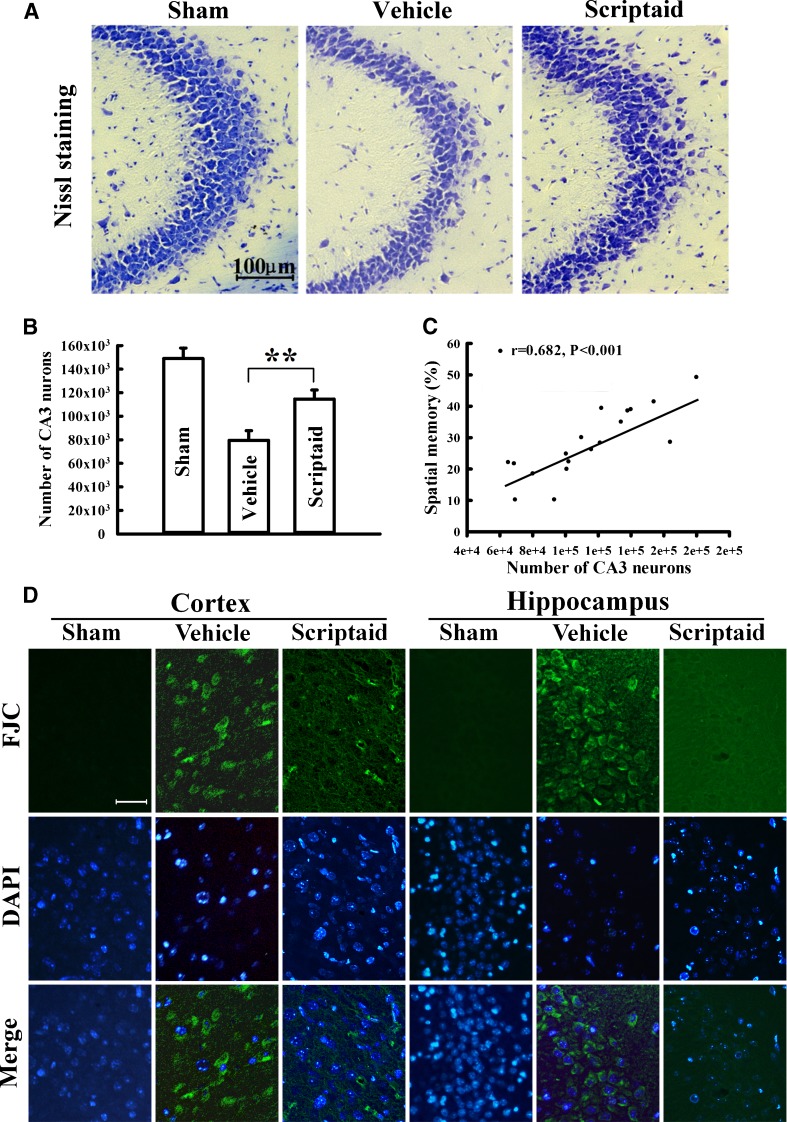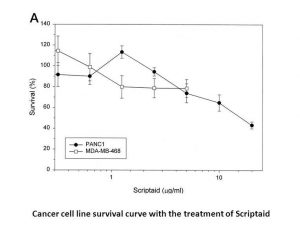This product is for research use only, not for human use. We do not sell to patients.

| Size | Price | Stock |
|---|---|---|
| 5mg | $90 | 3-6 Days |
| 25mg | $160 | 3-6 Days |
| 50mg | $250 | 3-6 Days |
| 100mg | $450 | 3-6 Days |
| 250mg | $830 | 3-6 Days |
| 500mg | $1350 | 3-6 Days |
Cat #: V0274 CAS #: 287383-59-9 Purity ≥ 98%
Description: Scriptaid (formerly GCK1026; Scriptide) is a novel and potent histone deacetylase (HDAC) inhibitor with potential anticancer activity. It shows potent anti-proliferative activity in vitro against various cancer cells such as Ishikawa endometrial and SK-OV-3 ovarian cancer cell lines. It can also sensitize the activity of antivirals with a potential for treating epstein-barr virus (EBV)-associated lymphomas.
Publications Citing InvivoChem Products
Product Promise

- Physicochemical and Storage Information
- Protocol
- Related Biological Data
- Stock Solution Preparation
- Quality Control Documentation
| Molecular Weight (MW) | 326.35 |
|---|---|
| Molecular Formula | C18H18N2O4 |
| CAS No. | 287383-59-9 |
| Storage | -20℃ for 3 years in powder form |
| -80℃ for 2 years in solvent | |
| Solubility In Vitro | DMSO: 65 mg/mL (199.2 mM) |
| Water: <1 mg/mL | |
| Ethanol: <1 mg/mL | |
| Synonyms | GCK 1026; GCK-1026; GCK1026; Scriptaid; GCK1026 |
| Protocol | In Vitro | In vitro activity: Scriptaid (6 μM) results in a >100-fold increase in histone acetylation in PANC-1 cell. Scriptaid (8 μM) is not lethal to PANC-1 cell and has limited effects (80% survival) on MDAMB-468. Scriptaid increases the transcription of pCMVb, p6SBE-luc and p6MBE-luc independent of a positive inducer of transcription. Scriptaid is capable of inducing high expression of p6MBE-luc, pCMVb, and pUB6/V5-LacZ, driven by viral (SV40 and CMV) or human (ubiquitin c, UB6) promoters, which do not depend on the specificity of the enhancer (SBE versus MBE), the type of promoter (viral versus cellular), the product of the reporter gene (luciferase versus b-gal), nor on the integration status of the reporter construct. Scriptaid induces high rates of somatic cell nuclear transfer (SCNT) oocytes development to the blastocyst stage and allowed full-term development (3.4, 4.2, 7.6, 6.8, and 4.1%) with all concentrations (50, 100, 250, 500, and 2000 nM respectively). Scriptaid improves the full-term development of cloned B6D2F1embryos in a dose-dependent manner with the maximum effect at 250 nM. Scriptaid enables the clone of all the important inbred mouse strains, such as C57BL/6, C3H/He, DBA/2, and 129/Sv. Scriptaid treatment enhances newly synthesized mRNA levels in cloned embryos. 250 nM Scriptaid treated for up to 48 h, does not inhibit the development of ICSI-fertilized embryos. Scriptaid inhibits T. gondii tachyzoite proliferation with IC50 of 39 nM. Scriptaid (0.225 μM) completely protects the HS68 monolayers from T. gondii tachyzoite. Scriptaid inhibits growth of ER negative cell lines, MDA-MB-231, MDA-MB-435 and Hs578t with IC50 of 0.5-1.0 μg/mL after 48 h treatment. 1 μg/ml Scriptaid treated for 48 h induces an accumulation of both acetylated H3 and acetylated H4 histone tail proteins, and a maximal of 20,000-fold increase of ER mRNA transcript. Scriptaid inhibits the proliferation and viability of the Ishikawa endometrial cancer cell line, and the SK-OV-3 ovarian cancer cell line with IC50 of 9 μM and 55 μM, respectively, while the normal human endometrial epithelial cells shows little sensitivity. Endometrial cancer cells and ovarian cancer cells cultured for 2 days in the presence of Scriptaid shows an accumulation in the G0/G1 phase (5 μM of Scriptaid) and G2/M phase (10 μM of Scriptaid) of the cell cycle, with a concomitant decrease in the proportion of those in the S phase. 10 μM of Scriptaid induces a 56.1% of apoptotic Ishikawa cells with loss of mitochondrial membrane potential, and decreased levels of cyclin A and bcl-2 levels by 50% and 20%, respectively. Kinase Assay: PANC-1 cells are treated with 2 μg/mL of Scriptaid for 18 h in culture medium. Treated and untreated cells are harvested with trypsin-EDTA, washed with PBS, and resuspended in a protein sample buffer. Protein concentration is determined by BCA protein assay reagents. Fifty μg of proteins from each sample is loaded on a 12% denaturing polyacrylamide gel. Proteins are subsequently transferred to a nylon membrane using MilliblotGraphite Electroblotter I. The nylon membrane is incubated with rabbit antihuman acetyl-lysine antibody, followed by goat antirabbit antibody coupled to horseradish peroxidase, developed with SuperSignal substrates, and detected by film. Cell Assay: Cells (Human breast cancer cells MDA-MB-231) are plated at a cell density of 5000 cells/well in 12 well plates and treated with Scriptaid for up to 3 days. Cells numbers are counted daily using a Coulter counter. |
|---|---|---|
| In Vivo | Scriptaid elicits a dose-dependent decrease in lesion size (a maximal decrease of 45%) at 1.5 to 5.5 mg/kg and a concomitant attenuation in motor and cognitive deficits when delivered 30 minutes postinjury in a model of mode rate TBI. Comparable protection is achieved even when treatment is delayed to 12 h postinjury. The protection of motor and cognitive functions is long lasting, as similar improvements are detected 35 days postinjury. Scriptaid induces an increase in surviving neurons (42%), as well as the number/length of their processes within the CA3 region of the hippocampus and the pericontusional cortex. Scriptaid treatment prevents the decrease in phospho-AKT (p-AKT) and phosphorylated phosphatase and tensin homolog deleted on chromosome 10 ( p-PTEN) induced by TBI in cortical and CA3 hippocampal neurons. Scriptaid treatment (3.5 mg/kg) clearly inhibits tumor growth in a human breast cancer xenograft MDA-MB-231 model, reducing tumor volume by 75%. | |
| Animal model | Human breast carcinoma xenografts MDA-MB-231 |
| Solvent volume to be added | Mass (the weight of a compound) | |||
|---|---|---|---|---|
| Mother liquor concentration | 1mg | 5mg | 10mg | 20mg |
| 1mM | 3.0642 mL | 15.3210 mL | 30.6419 mL | 61.2839 mL |
| 5mM | 0.6128 mL | 3.0642 mL | 6.1284 mL | 12.2568 mL |
| 10mM | 0.3064 mL | 1.5321 mL | 3.0642 mL | 6.1284 mL |
| 20mM | 0.1532 mL | 0.7660 mL | 1.5321 mL | 3.0642 mL |
This equation is commonly abbreviated as: C1 V1 = C2 V2
- (1) Please be sure that the solution is clear before the addition of next solvent. Dissolution methods like vortex, ultrasound or warming and heat may be used to aid dissolving.
- (2) Be sure to add the solvent(s) in order.





































